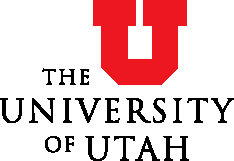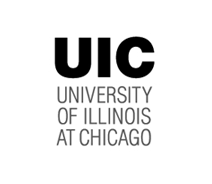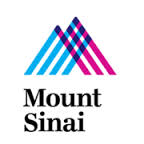Pegylated Interferon Alfa-2a Salvage Therapy in High Risk Polycythemia Vera (PV) or Essential Thrombocythemia (ET)
| Status: | Completed |
|---|---|
| Conditions: | Blood Cancer, Hematology |
| Therapuetic Areas: | Hematology, Oncology |
| Healthy: | No |
| Age Range: | 18 - Any |
| Updated: | 1/12/2017 |
| Start Date: | September 2011 |
| End Date: | December 2016 |
Single Arm Salvage Therapy With Pegylated Interferon Alfa-2a for Patients With High Risk Polycythemia Vera or High Risk Essential Thrombocythemia Who Are Either Hydroxyurea Resistant or Intolerant or Have Had Abdominal Vein Thrombosis
The aim of this research is to look at two conditions, Essential Thrombocythemia (ET) and
Polycythemia Vera (PV). ET causes people to produce too many blood cells called platelets
and PV causes too many platelets and red blood cells to be made. Platelets are particles
which circulate in the blood stream and normally prevent bleeding and bruising. Having too
many platelets in the blood increases the risk of developing blood clots, which can result
in life threatening events like heart attacks and strokes. When the number of red blood
cells is increased in PV this will slow the speed of blood flow in the body and increases
the risk of developing blood clots.
It is important for patients with ET or PV who are at risk of blood clots to receive drugs
which will minimize the risks of developing these blood clots but at the moment the
investigators are not sure which drugs will best control the disorder.
The purpose of this study is to look at the effectiveness of giving patients who have been
diagnosed with ET and PV a study drug regimen using Aspirin and PEGASYS (also known as
Pegylated interferon alfa-2a, instead of the standard treatment drug called Hydroxyurea (or
hydroxycarbamide or Hydroxyurea), for whom this drug may not be suitable. The drug may not
be suitable either because it is not adequately controlling the number of blood cells or
some specific side effects occur.
Polycythemia Vera (PV). ET causes people to produce too many blood cells called platelets
and PV causes too many platelets and red blood cells to be made. Platelets are particles
which circulate in the blood stream and normally prevent bleeding and bruising. Having too
many platelets in the blood increases the risk of developing blood clots, which can result
in life threatening events like heart attacks and strokes. When the number of red blood
cells is increased in PV this will slow the speed of blood flow in the body and increases
the risk of developing blood clots.
It is important for patients with ET or PV who are at risk of blood clots to receive drugs
which will minimize the risks of developing these blood clots but at the moment the
investigators are not sure which drugs will best control the disorder.
The purpose of this study is to look at the effectiveness of giving patients who have been
diagnosed with ET and PV a study drug regimen using Aspirin and PEGASYS (also known as
Pegylated interferon alfa-2a, instead of the standard treatment drug called Hydroxyurea (or
hydroxycarbamide or Hydroxyurea), for whom this drug may not be suitable. The drug may not
be suitable either because it is not adequately controlling the number of blood cells or
some specific side effects occur.
Myeloproliferative disorders (MPDs) are clonal hematologic diseases characterized by the
excess production of one or more lineages of mature blood cells, a predisposition to
bleeding and thrombotic complications, extramedullary hematopoiesis, and a variable
progression to acute leukemia. The classical Philadelphia chromosome-negative MPDs are
polycythemia vera (PV), characterized by an expansion in red blood cell production;
essential thrombocythemia (ET), characterized by an isolated elevation in the platelet
count; and myelofibrosis, distinguished by a fibrotic bone marrow and peripheral blood
cytopenias, and accompanied by the highest risk of leukemic transformation. Myelofibrosis
can arise de novo, as primary myelofibrosis (PMF), or can evolve out of PV or ET as those
diseases progress (so called post-PV MF and post-ET MF). Amongst the MPDs, those
characterized by myelofibrosis (PMF together with post-PV and post-ET MF) carry the worst
prognosis, with a median survival on the order of 3 to 5 years. Patients typically present
with anemia, often requiring transfusions, symptomatic splenomegaly and severe
constitutional symptoms. Donor stem cell transplantation is the only potentially curative
therapy. To date there is no therapy for myelofibrosis that has been shown to offer a
survival benefit, and all other therapies for myelofibrosis are palliative.
In 2005, a major breakthrough in understanding the pathophysiology of MPDs came when 4
groups described a recurrent somatic mutation in Janus kinase 2 (JAK2) in the majority of
patients with MPDs. The point mutation in JAK2 encodes a valine to phenylalanine change at
position 617 (JAK2 V617F), and confers constitutive tyrosine kinase activity. Introducing
the mutation into the bone marrow of mouse models recapitulates the PV phenotype (complete
with evolution to bone marrow fibrosis) and inhibitors of JAK2 attenuate the growth of cell
lines bearing the mutation in vitro and in vivo, suggesting that JAK2 V617F is a
pathophysiologically relevant therapeutic target. It is estimated that 95% of PV cases carry
JAK2 V617F, while 50 to 60% of ET and PMF cases are JAK2 V617F+. The discovery of the
JAK2V617F mutation in nearly all patients with PV and half those with ET and PMF have
redefined the classification and possibly the management of MPNs.
Despite the discovery of the JAK2V617F mutation, many of the clinical questions in the
management of MPNs remain unanswered. In PV, for example, cardiovascular mortality remains
1.4 to 1.6 times that of the reference normal population with leukemia and myelofibrosis
rates many times increased over baseline. Debate continues over the role of venesection
versus cytoreduction as first-line therapy, and whether hydroxycarbamide (Hydroxyurea) is
associated with better thrombotic prophylaxis and/or a higher rate of leukemic
transformation. Interferons may produce molecular responses in PV patients. In high-risk ET,
while Hydroxyurea and aspirin appear to be more optimal than anagrelide and aspirin,
vascular complications remain the most significant cause of mortality and morbidity,
suggesting that targeting vascular risk factors may be worthwhile.
Furthermore while Hydroxyurea is regarded as the first-choice therapy in most of high risk
patients with ET and PV; up to 10% of the patients do not attain the desired reduction of
platelet number or hematocrit with the recommended dose of the drug, exhibiting clinical
resistance, whereas some will develop unacceptable side effects, demonstrating clinical
intolerance.
Quantitation of the JAK2V617F allele burden provides for the first time the opportunity to
monitor the effect of potential therapeutic agents on the malignant clone in patients with
PV. Great enthusiasm has been expressed for the use of small molecule inhibitors of JAK2 for
the treatment of patients with MPN. Phase 1/2 trials have indicated greater than expected
toxicity, non specificity of action and an inability of these compounds to dramatically
alter the JAK2V617F allele burden. Interferon (rIFN -2b), is a drug that appears to be
non-leukemogenic (contrary to 32P, alkylating agents, and possibly Hydroxyurea), and may
have a preferential activity on the malignant clone in PV, as suggested by cytogenetic
remissions obtained in patients treated with rIFN -2b.
This trial was designed as open-label phase 2 study conducted in two strata of patients with
high risk PV or ET who were intolerant of hydroxyurea. Patients with ET or PV with
Splanchnic Vein Thrombosis (regardless of prior hydroxyurea) are enrolled in separate
strata.
excess production of one or more lineages of mature blood cells, a predisposition to
bleeding and thrombotic complications, extramedullary hematopoiesis, and a variable
progression to acute leukemia. The classical Philadelphia chromosome-negative MPDs are
polycythemia vera (PV), characterized by an expansion in red blood cell production;
essential thrombocythemia (ET), characterized by an isolated elevation in the platelet
count; and myelofibrosis, distinguished by a fibrotic bone marrow and peripheral blood
cytopenias, and accompanied by the highest risk of leukemic transformation. Myelofibrosis
can arise de novo, as primary myelofibrosis (PMF), or can evolve out of PV or ET as those
diseases progress (so called post-PV MF and post-ET MF). Amongst the MPDs, those
characterized by myelofibrosis (PMF together with post-PV and post-ET MF) carry the worst
prognosis, with a median survival on the order of 3 to 5 years. Patients typically present
with anemia, often requiring transfusions, symptomatic splenomegaly and severe
constitutional symptoms. Donor stem cell transplantation is the only potentially curative
therapy. To date there is no therapy for myelofibrosis that has been shown to offer a
survival benefit, and all other therapies for myelofibrosis are palliative.
In 2005, a major breakthrough in understanding the pathophysiology of MPDs came when 4
groups described a recurrent somatic mutation in Janus kinase 2 (JAK2) in the majority of
patients with MPDs. The point mutation in JAK2 encodes a valine to phenylalanine change at
position 617 (JAK2 V617F), and confers constitutive tyrosine kinase activity. Introducing
the mutation into the bone marrow of mouse models recapitulates the PV phenotype (complete
with evolution to bone marrow fibrosis) and inhibitors of JAK2 attenuate the growth of cell
lines bearing the mutation in vitro and in vivo, suggesting that JAK2 V617F is a
pathophysiologically relevant therapeutic target. It is estimated that 95% of PV cases carry
JAK2 V617F, while 50 to 60% of ET and PMF cases are JAK2 V617F+. The discovery of the
JAK2V617F mutation in nearly all patients with PV and half those with ET and PMF have
redefined the classification and possibly the management of MPNs.
Despite the discovery of the JAK2V617F mutation, many of the clinical questions in the
management of MPNs remain unanswered. In PV, for example, cardiovascular mortality remains
1.4 to 1.6 times that of the reference normal population with leukemia and myelofibrosis
rates many times increased over baseline. Debate continues over the role of venesection
versus cytoreduction as first-line therapy, and whether hydroxycarbamide (Hydroxyurea) is
associated with better thrombotic prophylaxis and/or a higher rate of leukemic
transformation. Interferons may produce molecular responses in PV patients. In high-risk ET,
while Hydroxyurea and aspirin appear to be more optimal than anagrelide and aspirin,
vascular complications remain the most significant cause of mortality and morbidity,
suggesting that targeting vascular risk factors may be worthwhile.
Furthermore while Hydroxyurea is regarded as the first-choice therapy in most of high risk
patients with ET and PV; up to 10% of the patients do not attain the desired reduction of
platelet number or hematocrit with the recommended dose of the drug, exhibiting clinical
resistance, whereas some will develop unacceptable side effects, demonstrating clinical
intolerance.
Quantitation of the JAK2V617F allele burden provides for the first time the opportunity to
monitor the effect of potential therapeutic agents on the malignant clone in patients with
PV. Great enthusiasm has been expressed for the use of small molecule inhibitors of JAK2 for
the treatment of patients with MPN. Phase 1/2 trials have indicated greater than expected
toxicity, non specificity of action and an inability of these compounds to dramatically
alter the JAK2V617F allele burden. Interferon (rIFN -2b), is a drug that appears to be
non-leukemogenic (contrary to 32P, alkylating agents, and possibly Hydroxyurea), and may
have a preferential activity on the malignant clone in PV, as suggested by cytogenetic
remissions obtained in patients treated with rIFN -2b.
This trial was designed as open-label phase 2 study conducted in two strata of patients with
high risk PV or ET who were intolerant of hydroxyurea. Patients with ET or PV with
Splanchnic Vein Thrombosis (regardless of prior hydroxyurea) are enrolled in separate
strata.
Inclusion Criteria:
A diagnosis of ET or PV shall be made in accordance with the WHO (2008) criteria (Swerdlow
2008) as shown below (Values below are at the time of diagnosis, not study entry):
- Polycythemia Vera (2 major criteria required)
1. Hb >18.5g/dl (♂) or 16.5g/dl (♀) or HCT >99 percentile reference range or
Elevated red cell mass (>25% above mean predicted value) or Hb >17g/dl (♂) or
15g/dl (♀) if associated with a sustained rise from baseline with no apparent
cause (e.g. treated iron deficiency).
2. Presence of JAK2V617F
- If source documentation of diagnostic criterion #1 cannot be obtained, then
diagnosis can be made with (1) the addition of an erythropoietin level
below the reference range of normal AND (2) bone marrow biopsy showing
hypercellularity for age with trilineage (panmyelosis) with prominent
erythroid, granulocytic, and megakaryocytic proliferation.
- Essential Thrombocythemia (all 6 criteria required)
1. Platelets count ≥ 450 x 10 to 9/L
2. Megakaryocyte proliferation with large and mature morphology. No or little
granulocyte or erythroid proliferation. Patients may have up to and including 2+
marrow reticulin fibrosis.
3. Not meeting WHO criteria for CML, PV, MDS, PMF or over myeloid neoplasm
4. Demonstration of clonal cytogenetic marker or no evidence for a reactive
thrombocytosis.
5. Absence of a leukoerythroblastic blood picture.
6. May participate in study without presence of JAK2V617F.
- Patients must have high risk disease as defined below:
High risk PV ANY ONE of the following:
- Age ≥ 60 years
- Previous documented thrombosis, erythromelalgia or migraine (severe, recurrent,
requiring medications, and felt to be secondary to the MPN) either after diagnosis or
within 10 years before diagnosis and considered to be disease related
- Significant (i.e. ≥ 5cm below costal margin on palpation) or symptomatic splenomegaly
(splenic infarcts or requiring analgesia)
- Platelets ≥ 1000 x 10 to 9/L
- Diabetes or hypertension requiring pharmacological therapy for ≥ 6 months
High risk ET ANY ONE of the following:
- Age ≥ 60 years
- Platelet count ≥ 1500 x 10 to 9/L
- Previous documented thrombosis, erythromelalgia or migraine (severe, recurrent,
requiring medications, and felt to be secondary to the MPN) either after diagnosis or
within 10 years before diagnosis and considered to be disease related
- Previous hemorrhage related to ET
- Diabetes or hypertension requiring pharmacological therapy for ≥ 6 months
In addition patients must EITHER be intolerant or resistant to Hydroxyurea according to
established criteria as follows:
Any ONE of the following:
- Platelet count ≥ 600 x 10 to 9/L after 3 months of at least 2 g/day of Hydroxyurea
(2.5 g/day in patients with a body weight>80 kg)
- WBC < 2.5 x 109/L or Hgb < 11g/dl at any dose of hydroxyurea not to exceed 2g/day.
- Progressive splenomegaly or hepatomegaly (> 5cm from initiation of hydroxyurea) or
the appearance of new splenomegaly or hepatomegaly while on MTD of hydroxyurea.
- Not achieving a Hct < 45% in order to eliminate the need for supplemental
phlebotomies after 3 months of at least 2g/day or MTD of hydroxyurea.
- Not achieving a WBC of < 10 x 109/L after 3 months of at least 2g/day or MTD of
hydroxyurea.
- Having a platelet count < 100 x 109/L on hydroxyurea at any dose without eliminating
the need for supplemental phlebotomy or having progressive splenomegaly as defined
above.
- Development of a major thrombotic episode (CVA, myocardial infarction, severe
migraines requiring medication, abdominal vein thrombosis, deep vein thrombosis)
while being treated with maximal tolerated doses of hydroxyurea.
- Presence of leg ulcers or other unacceptable Hydroxyurea-related non-hematological
toxicities, such as unacceptable mucocutaneous manifestations, gastrointestinal
symptoms, pneumonitis or fever at any dose of Hydroxyurea.
OR have Splanchnic Vein Thrombosis (SVT) (includes Budd-Chiari, abdominal vein thrombosis,
portal vein thrombosis, splenic vein thrombosis). For these patients the following
additional inclusion/exclusion criteria apply:
- > 3 months since onset of SVT
- SVT treated with oral anticoagulants but no aspirin
- Liver enzymes not > 2 times the normal value
- Absence of encephalopathy, refractory or infected ascites, esophageal varicose of
grade > 1 at time of trial entry
- Bone marrow biopsy confirmed diagnosis of PV or ET
- JAK2-V617F mutations present
- These patients may have a normal blood count at trial entry
- Age over 18 years (no upper age limit)
- Able and willing to comply with study criteria
- Signed and informed consent to participant in this study
- Willing to participate in associated correlative science biomarker study
- Serum creatinine < 1.5 x upper limit of normal
- AST and ALT < 2 x upper limit of normal
- Total bilirubin within normal limits
Exclusion Criteria:
- Patients cannot have any other form of chemotherapy for their MPD (other than
hydroxyurea). Specifically prior interferon or JAK2 inhibitors are prohibited.
- If a patient has received prior hydroxyurea, they should be tapered off hydroxyurea
over a period of the first 2 months of Pegylated interferon alfa-2a therapy. Taper is
at the treating physician's discretion, but must be absent (completed) by the start
of the third month.
- Patients with a prior malignancy within the last 5 years (except for basal or
squamous cell carcinoma, or in situ cancer of the cervix)
- Presence of any life-threatening co-morbidity
- History of active substance or alcohol abuse within the last year
- Any contraindications to pegylated or non-pegylated interferon
- Subjects who have a positive pregnancy test, are pregnant, lactating or of
reproductive potential and not practicing an effective means of contraception
- History of psychiatric disorder (e.g. depression; suicidal ideation; psychosis)
Subjects with a history of mild depression may be considered for entry into this
study, provided that a pretreatment assessment of the subject's affective status
supports that the subject is clinically stable based on the investigator's normal
practice for such subject.
- History of autoimmune disorder (e.g. hepatitis; ITP; scleroderma; severe psoriasis
affecting > 10% of the body, rheumatoid arthritis requiring more than intermittent
NSAID for management)
- Hypersensitivity to IFN-α
- HBV or untreated systemic infection
- Known HIV disease
- Evidence of severe retinopathy (e.g. CMV retinitis, macular degeneration) or
clinically relevant ophthalmological disorder (e.g. due to diabetes mellitus or
hypertension)
- History or other evidence of decompensated liver disease
- History or other evidence of chronic pulmonary disease associated with functional
limitation
- Thyroid dysfunction not adequately controlled
- Any investigational drug <6 weeks prior to the first dose of study drug or not
recovered from effects of prior investigational agent.
- Presence of JAK2 exon 12 mutation
- Patients should not meet criteria for post PV or post ET-MF (see appendix B)
- Previous exposure to any formulation of interferon
- Subjects with any other medical condition, which in the opinion of the investigator
would compromise the results of the study by deleterious effects of treatment.
- History of major organ transplantation
- History of uncontrolled severe seizure disorder
- Inability to give informed written consent
- Serum creatinine > 1.5 x upper limit of normal
- AST and ALT > 2 x upper limit of normal
- Total bilirubin > 1.5 mg/ml
- No detectable PNH (paroxysmal nocturnal hemoglobinuria) clone where tested
- Concurrent hormonal contraceptive use
We found this trial at
17
sites
3800 Reservoir Rd NW
Washington, District of Columbia 20007
Washington, District of Columbia 20007
(202) 687-7695

Georgetown University Medical Center Georgetown University Medical Center is committed to excellence in research, education...
Click here to add this to my saved trials
University of Utah Research is a major component in the life of the U benefiting...
Click here to add this to my saved trials
Click here to add this to my saved trials
University of Maryland As a globally-connected university offering a world-class education, the University of Maryland...
Click here to add this to my saved trials
Click here to add this to my saved trials
University of Illinois at Chicago A major research university in the heart of one of...
Click here to add this to my saved trials
Click here to add this to my saved trials
Duke Univ Med Ctr As a world-class academic and health care system, Duke Medicine strives...
Click here to add this to my saved trials
Click here to add this to my saved trials
Icahn School of Medicine at Mount Sinai Icahn School of Medicine at Mount Sinai is...
Click here to add this to my saved trials
Memorial Sloan Kettering Cancer Center Memorial Sloan Kettering Cancer Center — the world's oldest and...
Click here to add this to my saved trials
Click here to add this to my saved trials
Univ of Pennsylvania Penn has a long and proud tradition of intellectual rigor and pursuit...
Click here to add this to my saved trials
Click here to add this to my saved trials
Click here to add this to my saved trials
1 Medical Center Blvd
Winston-Salem, North Carolina 27103
Winston-Salem, North Carolina 27103
(336) 716-2011

Wake Forest University Baptist Medical Center Welcome to Wake Forest Baptist Medical Center, a fully...
Click here to add this to my saved trials






